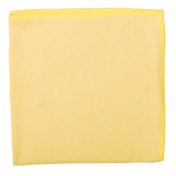Anyone who has ever tried to clean the hob after cooking with just a cleaning cloth and water knows that it doesn't work. A film of grease remains because oil doesn't dissolve in water. But if you use a kitchen cleaner , it disappears. Why is that? The so-called surfactants are behind it.
What exactly are surfactants?
Surfactants, also known as detergents , are molecules that consist of a hydrophobic (water-repellent) and a hydrophilic (water-loving) part. These can be found in detergents, cleaning agents, and hair shampoos, for example. If you add a little dishwashing liquid to the dishwater, the grease will dissolve from the dishes. The hydrophobic parts of the surfactant molecule are directed toward the grease and the hydrophilic part toward the water. The greasy dirt is thus coated in surfactants. Scrubbing the dishes or spinning the washing machine will dissolve the dirt from the clothes or plates.
Surfactants in cleaning products – good or bad?
At first glance, there is nothing wrong with cleaning agents or detergents that contain surfactants, but surfactants are pure chemicals and have some disadvantages . Some surfactants cause allergies in people or dry out the skin, and they are also bad for the environment. There is now a regulation that states that surfactants must be at least 80 percent biodegradable.
Surfactant-free alternatives just as effective and better for the environment
However, not every detergent or cleaning agent contains surfactants. There are numerous surfactant-free agents that have the same effect and some advantages over agents that contain surfactants. They contain far fewer harmful substances and are therefore better for the environment and people. In addition, they do not leave a thin film that encourages rapid soiling, meaning that less new soiling occurs. It cannot be denied that surfactants are ideal for dissolving grease , but often a fat-soluble agent is not needed. For example, surfactant-free cleaning agents are ideal for textile floor coverings or upholstery, as these may be dirty but often contain hardly any greasy dirt. The "fat-soluble" point is therefore unimportant.
Effective combination for residue-free cleaning
Last but not least, cleaning agent residues can be removed very well with a surfactant-free agent. The combination of the cleaning agent residues and surfactant-free agents removes the residues perfectly. It is not advisable to remove the residues with water alone, as this can result in unsightly limescale stains , which can be prevented by the surfactant-free cleaner.



